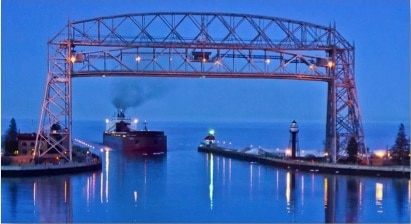
Since we published our post (Did $10 Million In Destination Marketing Make Duluth Famous?) I’ve enjoyed stimulating exchanges with folks we respect. To those who reached out, thank you! We received a number of thought-provoking questions. These inquiries resonated with us, because the very idea was to inspire dialog. We thought our readers would find some of the questions and answers interesting.
Have we proven that VisitDuluth is doing a bad job?
No. That was not the purpose of the post. We’ve asserted three things: (1) Fewer people around the world have heard of Duluth than some other areas as pertains to destination themed categories in search and social media. The numbers speak for themselves. (2) Duluth is not breaking out as we believe it could and should. (3) Duluth has little geographic outreach in digital media. People can draw their own conclusions what these assertions mean.
We read in the Duluth News Tribune recently that a consultant noted something similar — that our marketing is aimed locally and could be national and international because of the splendors of our region. (No link because the DNT charges for archived stories.) “Stapleton takes encouragement from Duluth’s growing popularity as a tourist destination, as well. ‘You really do have it all,” he said, observing: “Your brand is incredibly strong.'” But Stapleton said the city can do more to market itself on a national level. He urged Duluth to begin work on a new marketing plan, so it will be positioned to make the most of the much-awaited economic recovery.”
Does the general decline of tourism interests in the world, or Duluth’s possible good performance against Google Insights international and domestic category trends diminish the relevance of our study?
No. First, we don’t fully believe Google Insights category trends are as reliable a metric, because Google is not transparent in what keyword clusters comprise the datasets. The method we used, city compared to self/city, generates transparent keyword clusters to confirm. However, for the sake of speculation, let’s assume the trend-line data is good.
Our study was not about Duluth in relation to category trends! We don’t dispute them or claim that Duluth is performing poorly against trends. Our effort was to study Duluth in relation to itself and other places. Duluth may be holding its own and even possibly beating some category trends against the odds. Taking that a step further, it is possible that VisitDuluth’s marketing and/or other factors caused Duluth to avoid a skid that many other locations suffered. On the other hand, we’d be interested to see how Duluth fared against category trends if VisitDuluth did not exist.
Would it be embarrassing to find out that Clearwater or Fargo spends a lot more… or no money on Tourism, and that there are external reasons for their rising success other than marketing?
No. Of course it wouldn’t! Such information may provide good lessons for all. Perhaps Duluth need not spend much at all on the VisitDuluth website and marketing. Remember, in other categories, Duluth fares better than tourism. Maybe collaborative maintenance by volunteers would stimulate a better outcome. Also, so far as Duluth, Fargo, Clearwater, etc., these are only a half dozen out of thousands of destinations we could analyze. Every locale is different. Fargo may need tons of money for marketing. Clearwater may spend 5X what Duluth does on printed paper brochures.
Fargo is not, on its face, as pleasant a place as Duluth. Why do people want to travel there? Is their growth about how tourism has piggybacked on industrial or business growth? Is it because the overall interest in Fargo is still less than Duluth and has further to go? Maybe the reason is that it was extraordinarily weak in past years and is claiming its place.
Each region has unique challenges and advantages. Sure, we could dissemble years of activity and marketing for many places, find out their budgets and draw conclusions regarding what methodology resulted in their comparative reach. That would cost a lot of time and money to reverse engineer. We think time would be better spent working on growing Duluth’s national and international brand than arguing the details of why we’re less known.
Does VisitDuluth just need a little bigger budget to get to a critical mass?
Perhaps the answer is yes. We don’t know if Duluth spends too much or not enough or just the right amount, but we think the investment in Internet marketing may need to be redistributed amongst various channels. Postulating a budget wasn’t the purpose of the post. Rather, we took time to examine Duluth’s digital footprint.
Did we do all this because we’re trying to get AIMCLEAR hired?
Nope. We love Duluth. We have moved people here to live and work, we have kept UMD and CSS grads here when they were ready to leave. We did this research and created this post to create a dialog that may stimulate ways to make Duluth better known. It will make recruiting easier for us. We want more people to know the magic we know exists here. We don’t care who does it as long as they do it well.
What is our motivation?
We set out to spawn a dialog about setting higher goals that involve geographic outreach, name recognition, and a short, medium, and long-term plan to grow Duluth into the powerhouse it deserves to be. If my inbox is any indication of other private conversations taking place around the city, then we have reached the first goal… dialog!
Image By Dennis O’Hara, NorthernImages.com








